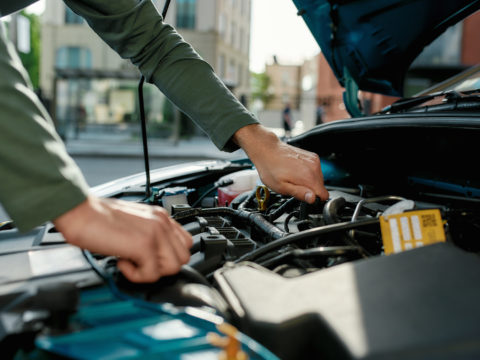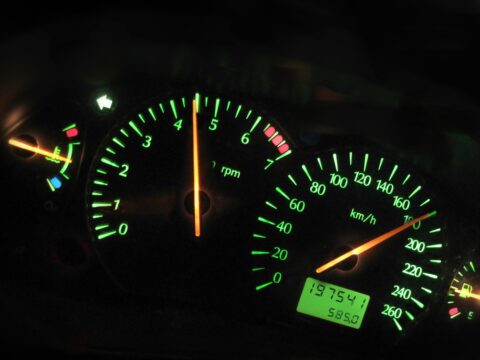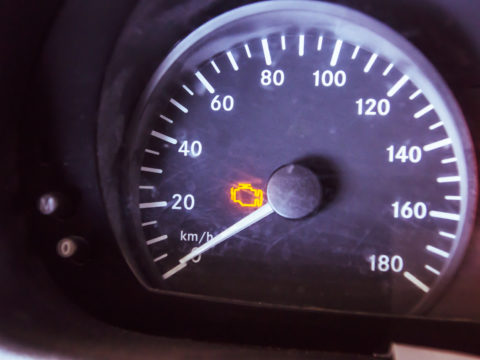You’ve heard of a timing belt, but do you know what the serpentine belt is? Some people use the terms “timing belt” and “serpentine belt” interchangeably. But both engine components have different functions.
What’s the difference between a serpentine belt vs a timing belt? Read on to learn more about the differences, similarities, and what each component does.
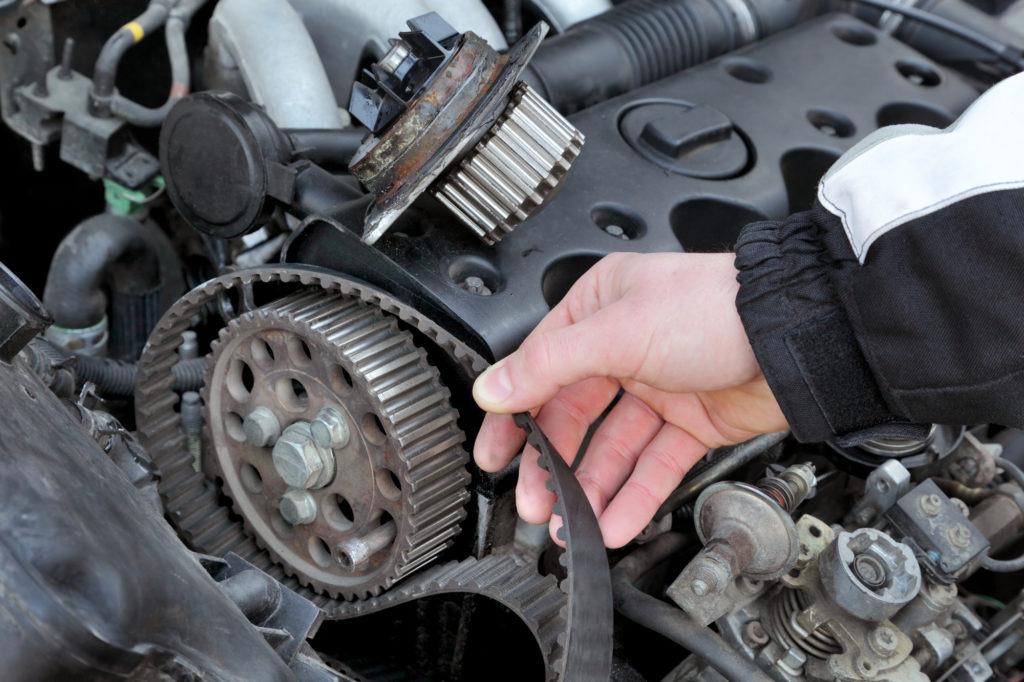
Contents
Definitions
The serpentine belt and timing belt perform crucial functions in the performance of your vehicle. To understand the roles, let’s look at their definitions.
Serpentine Belt Definition
A serpentine belt is a V-ribbed belt and ribbed on one side. These ribs make it more flexible, which allows the belt to move and wrap around smaller accessories in the engine.
The belt’s ribbed side is in contact with grooves on accessory drive pulleys, while the flat side is in contact with a tensioner roller. The serpentine belts get their name from their appearance and how they weave themselves in and out of various accessories and pulleys with ease.
What is a Timing Belt?
The timing belt is a rubber belt with hard teeth for interlocking with the crankshaft and camshaft cogwheels. Depending on your vehicle model, you may have a timing chain instead of a timing belt.
Timing chains function the same as the belt, but they have metal instead of rubber. Timing belts were introduced in the 1960s because they are quieter and lighter. Design improvements and a long lifespan are fueling the return of timing chains in many modern cars.
Differences Between a Timing Belt and a Serpentine Belt
There are several differences between a serpentine belt and a timing belt. Below is a table outlining the main differences.
| Serpentine Belt | Timing Belt | |
| Location | Outside engine | Inside engine |
| Functionality | Runs power accessories bolted to the engine | Turns the camshaft(s) which open and close the valves |
| Length | Usually long depending on vehicle model | Short diameter |
| Stretch Tension | Not more than 0.5 inches deflection when twisted in the middle | 10% to 30% slackness |
| Groove Design | Horizontal “teeth” | V-shaped grooves |
| Lifespan | 50,000 to 60,000 miles | 60,000 to 100,000 miles |
| Cost of Purchase | $25 to $75 | $20 to $100 |
| Replacement Cost | $100 to $200 | $300 to $500 |
I. Location
The serpentine belt is outside the engine. It’s the long rubber band stretched out on the side of your car once you pop the hood.
The timing belt is inside the engine. It’s directly connected to your engine via the crankshaft. Most vehicles have the timing belt encased in a steel casing, making it difficult to replace.
II. Functionality
A serpentine belt connects to your alternator, power steering pump, water pump, and other accessories. The belt powers many components, and they move because the belt does.
Further, the serpentine belt is friction-oriented or friction driven. The force it generates depends on the friction between the belt and pulley surfaces it runs. Its role is to rotate, turn, or drive all pulleys connected to it.
The timing belt connects the crankshaft to the engine valves, which supply fuel and air. This belt plays a critical role in the combustion process of your vehicle.
A timing belt is directly driven because it’s directly connected to the crankshaft pulley and turns the camshaft.
III. Length
The timing belt is shorter than a serpentine belt. Remember that the serpentine belt envelops several pulleys while a timing belt connects only two.
IV. Stretch Tension
The required measure of tension in a serpentine belt is it shouldn’t deflect over 0.5 inches when twisted either way from the middle. A higher twist shows the belt is loose, while a lesser twist means it’s too tight.
Timing belts function best when the magnitude of slack side tension is about 10% to 30% that of the effective tension. An insufficiently tense timing belt increases the chances of it pinging off. Too tight will cause stress on the bearings indicated by a loud running noise.
V. Groove Design
Grooves of the serpentine belt have a V-shape. These grooves run vertically along the belt’s inside diameter.
A timing belt has horizontal grooves that fit the teeth or cogs of the crankshaft.
VI. Lifespan
Serpentine belts and timing belts have different lifespans.
When Should a Serpentine Belt be Changed?
Most serpentine belts are sturdy and made to last long. In ideal driving conditions, a serpentine belt should last between 60,000 miles to 100,000 miles. While they are made to last, it’s good practice to include the belt in your preventive maintenance schedule.
Replace the serpentine belt when it nears its end of service life. If you’re not sure how many miles you have left, have a qualified mechanic check the belt.
When Should a Timing Belt be Changed?
The timing belt in a modern car can last 100,000 miles. Belts on older models will give you at least 60,000 miles.
Replace the timing belt when the water pump is failing. This is because you have to remove the timing belt before removing and replacing the water pump.
VII. Cost of Purchase
The typical price for a serpentine belt is between $25 and $75, depending on the make, model, and year of your car.
The timing belt itself will cost you between $20 and $100, depending on the type you require.
VIII. Replacement Cost
Replacing the serpentine belt is a routine repair job. Labor costs for belt replacement are between $100 and $200.
The cost of replacing your vehicle’s timing belt can be anywhere between $300 and $500. Prices may go up based on the mechanic and if you have a rare model with a hard-to-reach timing belt.
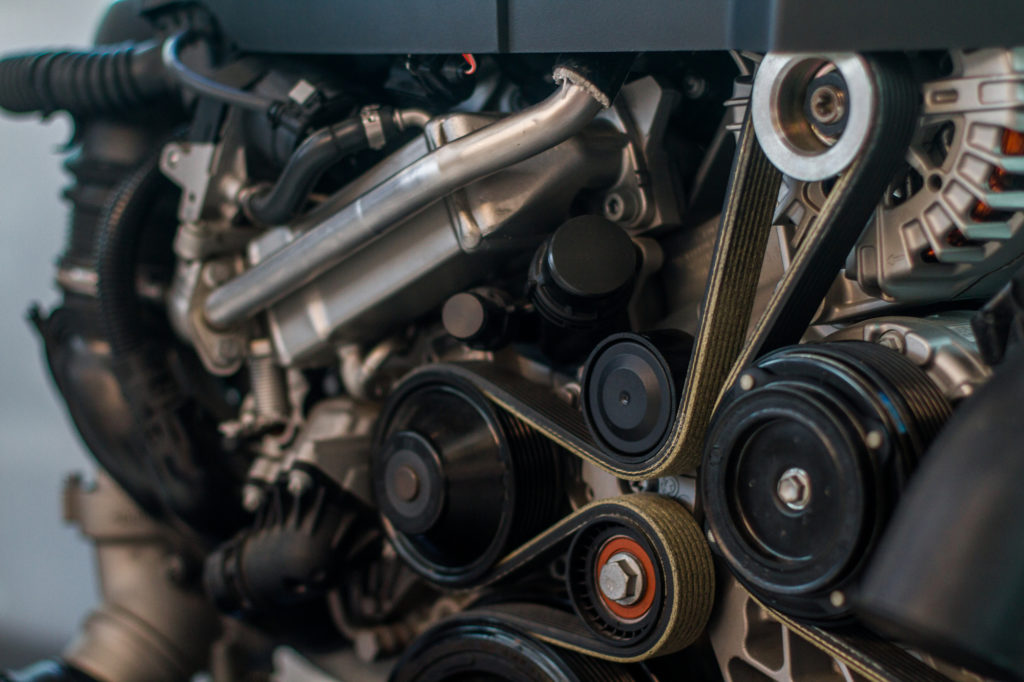
What Exactly Does a Serpentine Belt Do?
The serpentine belt drives critical engine accessories, including the oil pump, cooling fan, power steering, water pump, and alternator. This ensures the engine runs in good or ideal conditions at all times.
Without a serpentine belt, your engine would run hot all the time because the cooling fan and oil pump are not working. Electrical components connected to the alternator would also not run because there aren’t enough rotations to power your vehicle.
Modern vehicles have a single serpentine belt to drive different engine accessories. Classic cars have two or three serpentine belts for optimal engine operation. The design of serpentine belts will differ depending on the layout of the engine and accessories.
The serpentine belt is looped around a pulley at the end of the crankshaft, so it has the power to do all its functions. Engine combustion reaction causes the pistons to move up and down in the valves and cylinders to open and close, turning the crankshaft.
A serpentine belt attached to the end of the crankshaft transfers the power to other systems in the vehicle, so everything runs in unison. When the belt slips or breaks, many parts of your car will fail at the same time.
What Exactly Does a Timing Belt Do?
The timing belt drives the camshaft through the crankshaft.
A camshaft is a rotating metal with cams for valve timing. The component is the reason your engine has excellent valve operation timing, so every two crankshaft rotations result in a single camshaft rotation.
The timing belt has teeth on the insider because it hooks into the crankshaft and camshaft gears, so they’re connected. A Timing belt is a critical vehicle component that ensures the crankshaft and camshaft work in exact synchronous order.
As the Pistons rise and fall, valves and cylinders in the engine open and close with exact timing thanks to the timing belt. If the belt were to slip or break, then the camshaft and crankshaft are out of order.
Interference engines will stop the camshaft if the timing belt breaks, but the crankshaft keeps moving. This can cause pistons to hit against closed valves, causing massive and expensive damage to your engine. You can prevent all that from happening by ensuring the timing belt is in excellent working order.
Timing chains handle more wear and tear compared to the timing belt and will last longer. While all car parts are subject to accidental damage, a timing chain has a much longer life.

